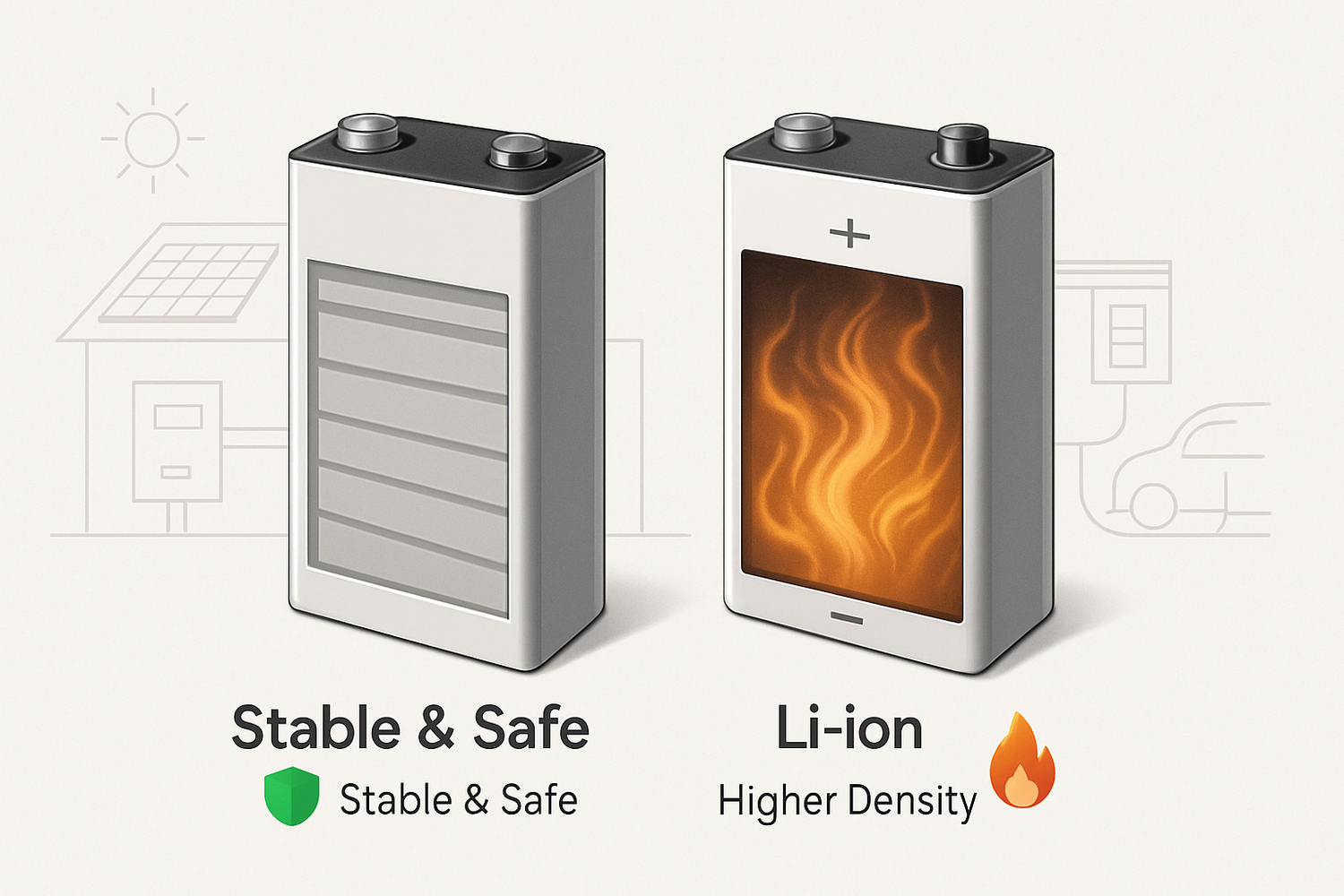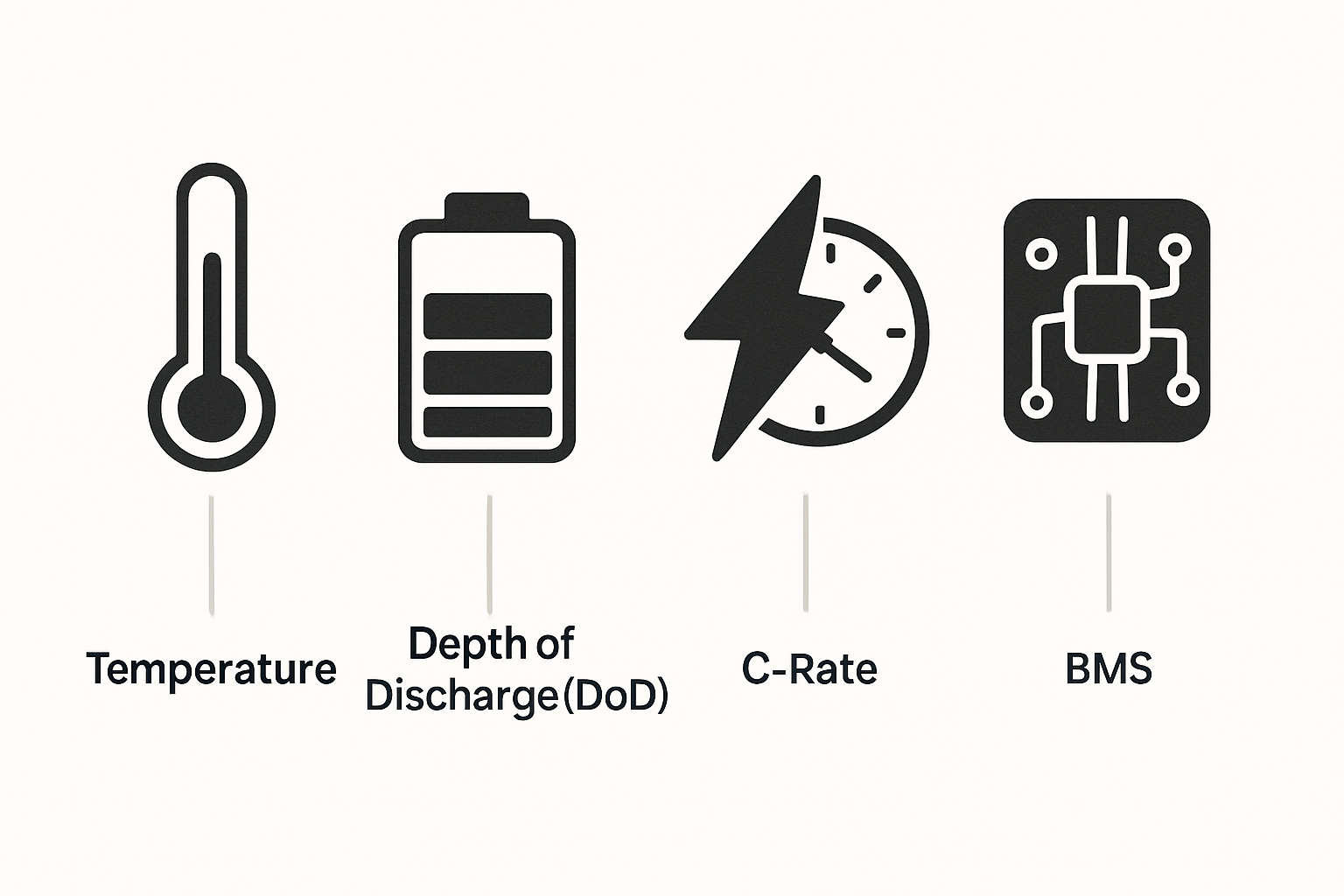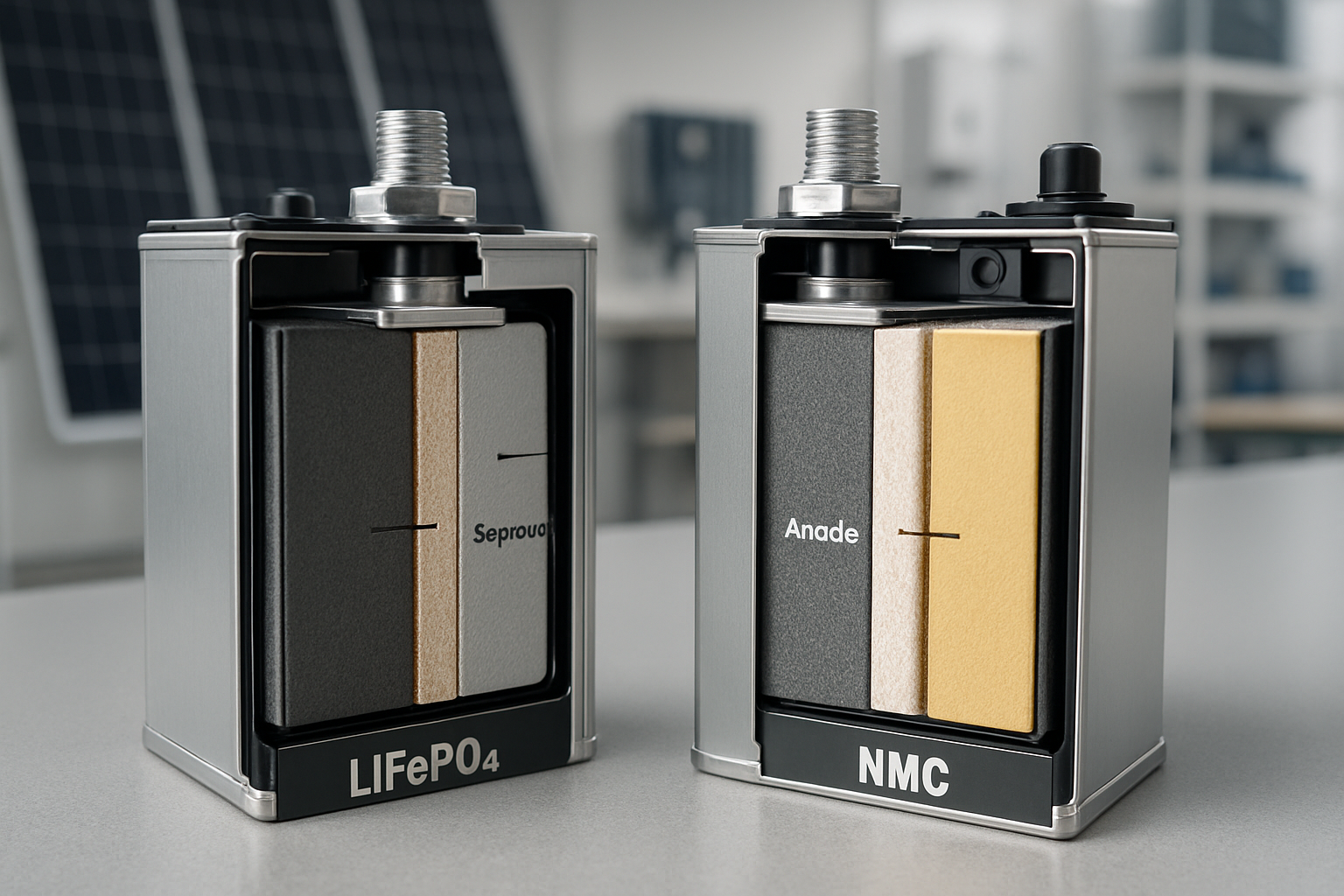Selecting the right battery for a solar energy system is a critical decision that impacts safety, longevity, and overall value. While several types of lithium-ion batteries exist, the choice for residential and commercial solar storage often comes down to two leading chemistries: Lithium Iron Phosphate (LiFePO4) and other lithium-ion variants like Nickel Manganese Cobalt (NMC). Understanding their fundamental differences is key to building a reliable and efficient energy storage solution.
LiFePO4 batteries have emerged as the preferred option for stationary solar storage for several compelling reasons. This analysis covers the seven key factors that distinguish LiFePO4 technology, providing a clear picture of why it offers a superior combination of safety, performance, and long-term value for achieving energy independence.
1. Unmatched Safety and Stability
For any energy system installed in a home or business, safety is the primary concern. LiFePO4 batteries offer a significantly higher level of safety compared to their cobalt-based lithium-ion counterparts.
The Chemistry of Security
The core advantage of LiFePO4 lies in its exceptionally stable chemical structure. The bond between the phosphate and oxygen atoms is incredibly strong, making the material resistant to overheating and preventing the release of oxygen during stress events. This inherent stability drastically reduces the risk of thermal runaway, a dangerous chain reaction where a battery cell overheats uncontrollably, potentially leading to fire or explosion. In contrast, chemistries like NMC are more prone to thermal runaway if damaged, overcharged, or exposed to high temperatures.
Real-World Peace of Mind
This chemical stability translates directly into greater safety for property and occupants. Home energy storage systems must meet stringent safety standards, such as UL 9540, to minimize risks. Because LiFePO4 chemistry is less volatile, it provides an essential layer of security, making it the responsible choice for residential applications. According to the U.S. Environmental Protection Agency, proactive safety measures and robust system design are critical for minimizing risks associated with battery storage.
2. Superior Lifespan and Long-Term Value
A solar battery is a long-term investment. LiFePO4 technology delivers a much longer operational life than other lithium-ion types, resulting in a lower total cost of ownership.
Cycle Life That Lasts for Years
Cycle life refers to the number of full charge and discharge cycles a battery can endure before its capacity significantly degrades. LiFePO4 batteries excel in this area, typically offering between 3,000 and 7,000 cycles. In comparison, many NMC batteries provide 1,000 to 2,000 cycles. For a solar system that cycles daily, this means a LiFePO4 battery can reliably perform for well over a decade, while other types might need replacement much sooner.
Calculating the True Cost
While the initial purchase price of a LiFePO4 battery might be slightly higher, its extended lifespan makes it more economical over time. The Levelized Cost of Storage (LCOS)—the total cost divided by the total energy delivered over its life—is often lower for LiFePO4. For a deeper look into performance metrics that influence long-term value, the ultimate reference on solar storage performance provides detailed data on how cycle life and depth of discharge impact your investment.
3. Robust Performance in Real-World Conditions
Solar energy systems operate in diverse environments. LiFePO4 batteries are better equipped to handle the temperature fluctuations and demanding daily use that these systems require.
High Thermal Tolerance
LiFePO4 batteries can operate efficiently across a wider temperature range, typically from -20°C to 60°C (-4°F to 140°F), without significant performance degradation. Other lithium-ion chemistries are more sensitive to temperature extremes and often require complex and energy-consuming thermal management systems to maintain safety and efficiency.
Consistent and Reliable Power Delivery
Another key performance advantage is the flat voltage discharge curve of LiFePO4 batteries. This means the battery maintains a consistent voltage output for almost the entire discharge cycle. You get steady, reliable power for your appliances, unlike other chemistries where the voltage drops more noticeably as the battery depletes.
4. Energy Density: A Practical Perspective
Energy density—the amount of energy stored per unit of weight or volume—is one area where NMC and other cobalt-based batteries have a technical edge. However, this advantage is less significant for stationary applications.
The Weight and Size Trade-Off
NMC batteries can store more energy in a smaller space, making them ideal for portable electronics and electric vehicles where weight and size are critical constraints. LiFePO4 batteries are slightly bulkier for the same capacity.
Why It Matters Less for Solar Storage
For a home or commercial solar energy storage system, the battery is stationary. A marginal difference in weight or size is rarely a deciding factor. The priorities for these applications are safety, lifespan, and cost-effectiveness—all areas where LiFePO4 excels. The trade-off of slightly lower energy density is easily accepted for greater peace of mind and long-term reliability.
5. Environmental and Ethical Advantages
The materials used in batteries have significant environmental and ethical implications. LiFePO4 technology offers a more sustainable and responsible choice.
The Cobalt-Free Chemistry
LiFePO4 batteries are completely free of cobalt, a rare and expensive metal. A significant portion of the world's cobalt supply comes from regions associated with unethical mining practices, including child labor and unsafe working conditions. By choosing a cobalt-free battery, you avoid contributing to these humanitarian and environmental issues.
Abundant and Less Toxic Materials
The core components of LiFePO4 batteries—iron and phosphate—are abundant, inexpensive, and far less toxic than cobalt and nickel. This not only contributes to a lower environmental footprint during production but also simplifies recycling and disposal at the end of the battery's life.
6. Cost-Effectiveness and Market Trends
The global demand for energy storage is surging, and cost is a major driver of technology adoption. According to the International Renewable Energy Agency (IRENA), the costs for battery storage have fallen dramatically, making systems more accessible. The International Energy Agency (IEA) also notes that growth in battery deployment outpaced nearly all other clean energy technologies in 2023.
Falling Prices and Growing Adoption
LiFePO4 technology, in particular, has benefited from economies of scale and is becoming increasingly cost-competitive. Its use is expanding beyond solar storage into the electric vehicle market, further driving down costs and solidifying its position as a mainstream technology.
7. Enhanced System Compatibility
The nominal voltage of a LiFePO4 cell is approximately 3.2V, which compares favorably to the 3.6V-3.7V of NMC cells. This characteristic simplifies system design for common voltage requirements.
Ideal for 12V and 48V Systems
Four LiFePO4 cells in series create a nominal voltage of 12.8V, making them a perfect drop-in replacement for traditional 12V lead-acid systems in off-grid applications. Similarly, sixteen cells form a 51.2V system, ideal for modern home energy storage solutions. This compatibility simplifies integration with a wide range of solar inverters and charge controllers.
Comparative Overview
| Feature | LiFePO4 (LFP) | Lithium-Ion (NMC/LCO) |
|---|---|---|
| Safety | Very High (low risk of thermal runaway) | Moderate (higher risk of thermal runaway) |
| Cycle Life | 3,000 - 7,000+ cycles | 1,000 - 2,000 cycles |
| Thermal Stability | Excellent, wide operating range | Fair, requires more thermal management |
| Energy Density | Good (160-180 Wh/kg) | Higher (200-250+ Wh/kg) |
| Environmental Impact | Low (cobalt-free, abundant materials) | Higher (contains cobalt and nickel) |
| Long-Term Cost | Lower due to extended lifespan | Higher due to shorter lifespan |
Making the Right Choice for Your Energy Future
While other lithium-ion chemistries have their place in high-density applications, the evidence for solar energy storage is clear. LiFePO4 technology offers a superior blend of safety, longevity, performance, and sustainability. Its robust chemical structure, long cycle life, and cobalt-free composition make it the ideal foundation for a reliable and cost-effective home or commercial energy storage system. By prioritizing these factors, you can build a solution that not only provides energy independence but also ensures safety and value for years to come.
Frequently Asked Questions
Is LiFePO4 the same as lithium-ion?
LiFePO4 is a specific type of lithium-ion (li-ion) battery. The term 'lithium-ion' describes a broad family of batteries with different chemistries. LiFePO4 is distinguished by its use of lithium iron phosphate as the cathode material, which makes it exceptionally stable and safe compared to other li-ion types that use cobalt or manganese.
Can I use any lithium-ion battery for my solar system?
While technically possible, it is not recommended. Batteries designed for consumer electronics or electric vehicles are optimized for different purposes, such as high energy density in a small size. A solar storage system requires a battery built for deep, daily charge-discharge cycles over many years. LiFePO4 deep cycle batteries are specifically engineered for this type of application, ensuring both longevity and safety.
What is the main drawback of LiFePO4 batteries?
The primary trade-off for LiFePO4 batteries is their lower energy density compared to chemistries like NMC. This means they are slightly larger and heavier for the same amount of energy storage. However, for stationary applications like a home solar system, this is a minor inconvenience that is far outweighed by the significant advantages in safety, lifespan, and long-term value.





Leave a comment
All comments are moderated before being published.
This site is protected by hCaptcha and the hCaptcha Privacy Policy and Terms of Service apply.